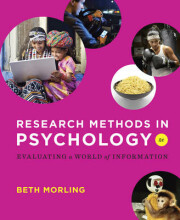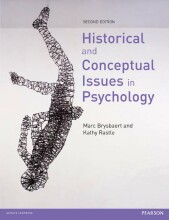Signal detection theory
8 important questions on Signal detection theory
What is signal detection theory?
- It is a technique which models decisions made under uncertainty
- uncertainty can be caused by time pressure, inherent randomness, or both
- separates two key variables:
- d', the ability to tell the two options/signals apart
- B or C, the bias to choose one over the other
- the modelling is based on normal distributions of perception of the two signals.
Describe an example of the radar control tower where signal detection theory can be applied
- If you're in an airport control tower you're viewing a radar which indicates locations in the sky where mass has been detected. It's your task to determine whether the mass is an airplane or a flock of birds.
- of the two options a normal distribution can be made of their signal strength and their frequency of occurring.
- the two distributions show some overlap. In this case signal detection theory can be applied.
What is meant by a liberal or conservative criterion?
- In the overlapping region of airplanes and birds you need to set a criterion for when you'll identify something as a bird and when you'll identify something as a plane.
- from the viewpoint of the task being: "is it a plane?", a more liberal criterion would be a criterion where you'd identify relatively more cases as planes, compared to a criterion in a symmetric position of the overlap.
- a more conservative criterion would be if you'd identify relatively less cases as planes compared to a criterion in a symmetric position of the overlap.
- Higher grades + faster learning
- Never study anything twice
- 100% sure, 100% understanding
How do liberal and conservative criterions influence false positives and false negatives?
- A more liberal criterion causes;
- more true positives/hits; plane identified as plane
- less false negatives/misses; plane identified as birds
- more false positives/false alarms; birds identified as plane
- less true negatives/correct rejections; birds identified as birds
- more conservative criterion causes
- less true positives/hits; plane identified as plane
- more false negatives/misses; plane identified as birds
- less false positives/false alarms; birds identified as plane
- more
true negatives/correct rejections; birds identified as birds
What is meant by signal and noise in signal detection theory?
- Signal is the to be identified case, in the example planes.
- noise is the alternative case, in this case birds.
What is the bias in signal detection theory?
- Your cutoff criterion.
- as was presented, the liberality or the conservativeness of your bias influences your hits, misses, correct rejections and false alarms
What is d' in the signal detection theory?
- D' is conceptually how well the concept and the alternative concept can be distinguished
- it is the distance between the means of both distribution scaled by the standard deviations.
- it represents the difficulty of the task.
How can you calculate d' and c in excel?
- d’ = z(Hits) – z(FA)
- c = -(z(Hits) + z(FA))/2
- or, -0.5*(z(Hits) + z(FA))
- z(Hits) and z(FA) is a standardized transformation, which does not take the sample properties into account, but instead relies on the properties of proportion distributions.
- in excel, z(x) can be obtained by using the NORM.S.INV(x) function.
- d' = NORM.S.INV(hits) - NORM.S.INV(FA)
- the d' represents the standardized distance between the means of the noise distribution and the signal distribution
- the c is where the cutoff score is placed
The question on the page originate from the summary of the following study material:
- A unique study and practice tool
- Never study anything twice again
- Get the grades you hope for
- 100% sure, 100% understanding































